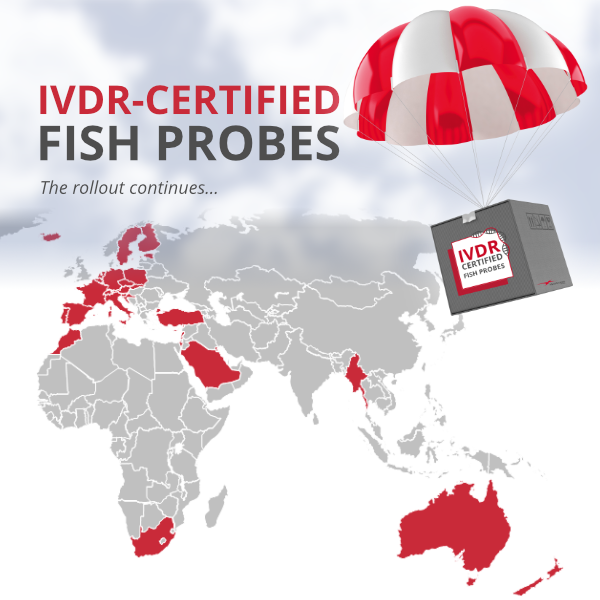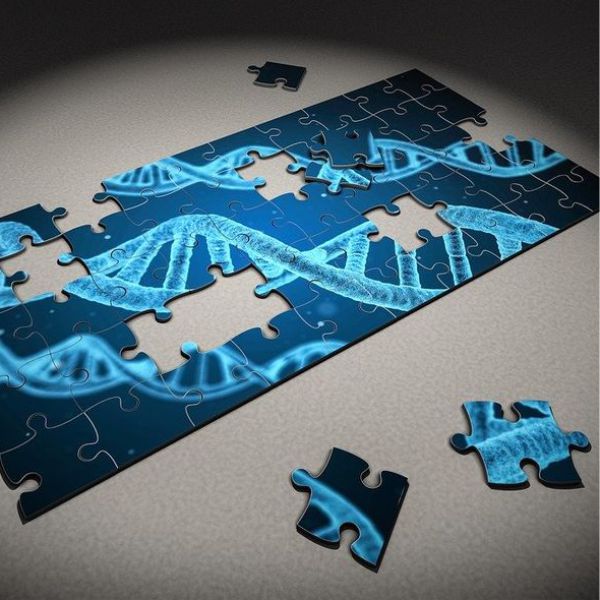Delivery of IVDR-certified XCyting FISH probes will begin on October 1, 2025, in Finland, Portugal, Sweden, and Spain.

Our internet site may contain information that is not approved in all countries or regions. To ensure accuracy of content, please select your country/region of residence. Choose International if your country is not listed.
This information will be saved using cookies. To find out more about cookies, read our Privacy Policy.
Please select your country of residence. Choose International if your country is not listed.
Our internet site may contain information that is not approved in all countries or regions. To ensure accuracy of content, it is required that you select the site which is appropriate for your country of residence.
Based on your previous selection, you have been forwarded to the website for International.
MetaSystems Probes has received IVDR certification for our initial 26 fluorescence in situ hybridization (FISH) probes from the notified body, BSI. Achieving this milestone was not without its challenges, and we are delighted to have accomplished IVDR certification for this probe set at an early stage.

Today, MetaSystems Probes introduces 4 new probes in the field of hematology and oncology. XL t(5;11) NSD1/NUP98 DF, XL ETV6 BA, XL PAX5 BA, and XL 5p15/21q22 are intended as diagnostic tools for detecting recurrent aberrations described in acute myeloid leukemia (AML), acute lymphoblastic leukemia (ALL), and multiple myeloma (MM).

MetaSystems Probes is proud to present our new XRNA product line! It consists of five different RNA FISH probes intended for multifaceted applications. Our XRNA SARS-CoV-2 probe can be used to detect viral RNA in cell and tissue samples, while automation and quantification can be provided by MetaSystems’ slide scanning platform Metafer. The remaining probes are designed for expression analysis of two central proteins of SARS-CoV-2 viral host-cell-entry (ACE2 and TMPRSS2), and the housekeeping gene (PGK1). Additionally, we offer an XRNA probe for RNA expression analysis of the immune checkpoint component PD-L1.
Our XRNA probes can be used for analysis of many different sample types including cellular samples from swabs, sputum, bronchoalveolar lavage and tissue sections.
Today, MetaSystems Probes provides the acute myeloid leukemia (AML) FISH Guide leaflet. Based on two widely accepted risk stratification models and the ‘WHO Classification of Tumours of the Haematopoietic and Lymphoid Tissues’, this informative brochure summarizes AML associated entities, their underlying chromosomal aberrations and the appropriate MetaSystems FISH probes for detection.

Fluorescence in situ hybridization has become an essential detection assay in today´s routine diagnostics. However, long hybridization times of many hours to overnight are still a restrictive factor. We have refined the production process of our FISH probes to reduce background and artefacts and to improve the signal to noise ratio, particularly in short-time hybridization. Since mid-2015, one hour hybridization on lymphocytes is an integral part of quality control for all XCyting locus-specific probes at our manufacturing facility.

Sarcomas are representing a heterogeneous group of tumors originating from mesenchymal tissue. Around 80% develop from soft tissue, the remaining 20% from bone. Sarcomas are frequently observed in children and young adults, accounting for more than 20% of all pediatric neoplasms. Due to the diversity, more than 100 subtypes are known to date, the diagnosis of sarcomas is challenging and fluorescence in situ hybridization has become a valuable tool to analyze the molecular signature of sarcoma subtypes today.



